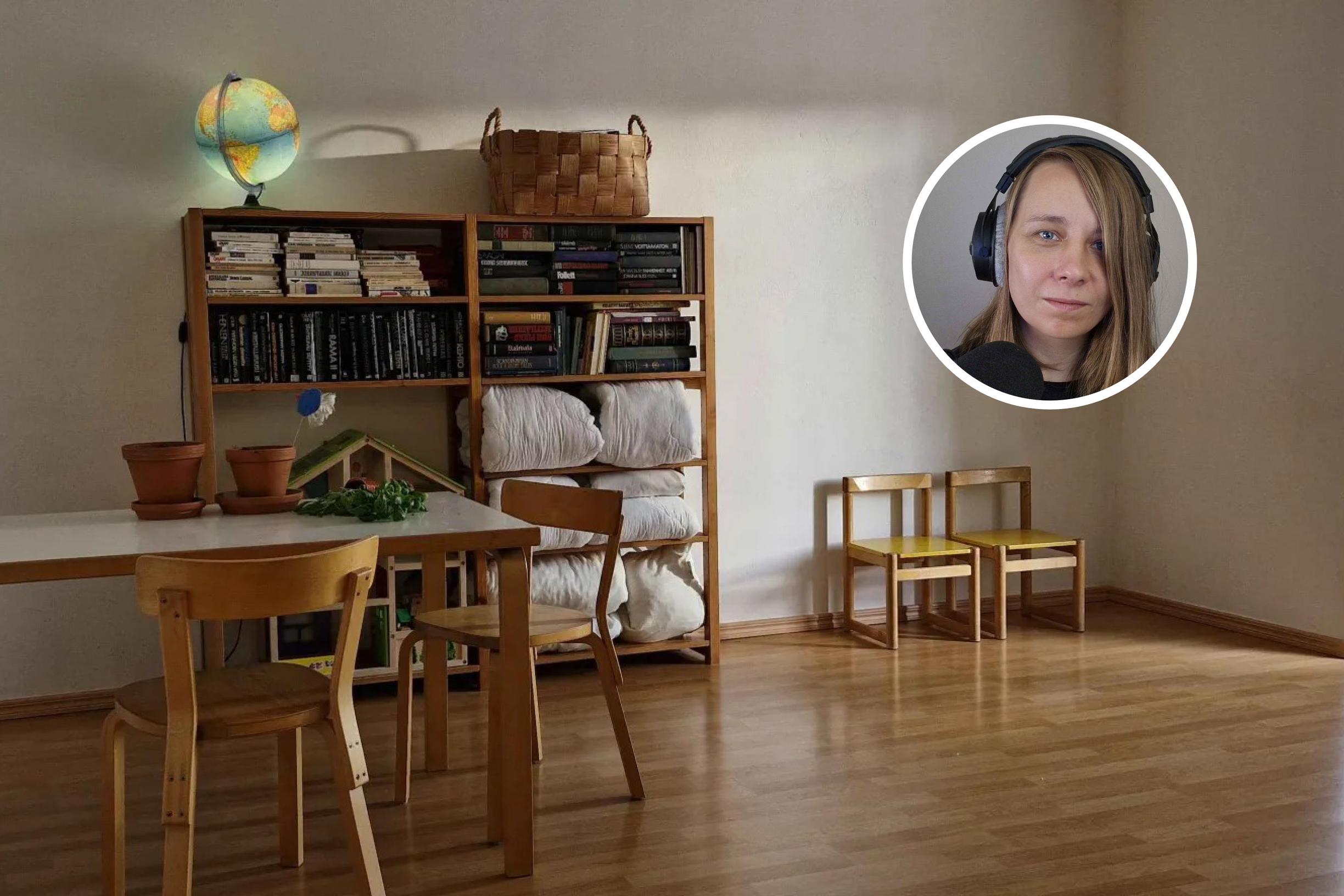
Family of six in 56 square meters: “My husband suggested getting rid of our beds, and it was the best idea ever!”
Riina Kiesiläinen, 38, lives with her family in a 56-square-meter home—without a sofa. Their minimalist lifestyle includes just one pot, six plates, and six towels. “Our small-space life is affordable and runs smoothly,” Riina says.
I live in Tampere with my family in a large apartment complex that surrounds what’s said to be the biggest courtyard in the Nordic countries. We’ve been very happy here for 12 years.
We stayed in our small home even as our family grew. Our apartment is 56 square meters and houses six of us: me, my spouse, and our four children—one teenager, two primary schoolers, and one preschooler.
Many people dream of having as large a home as possible to make daily life easier. For me, though, a small home is what brings calm.

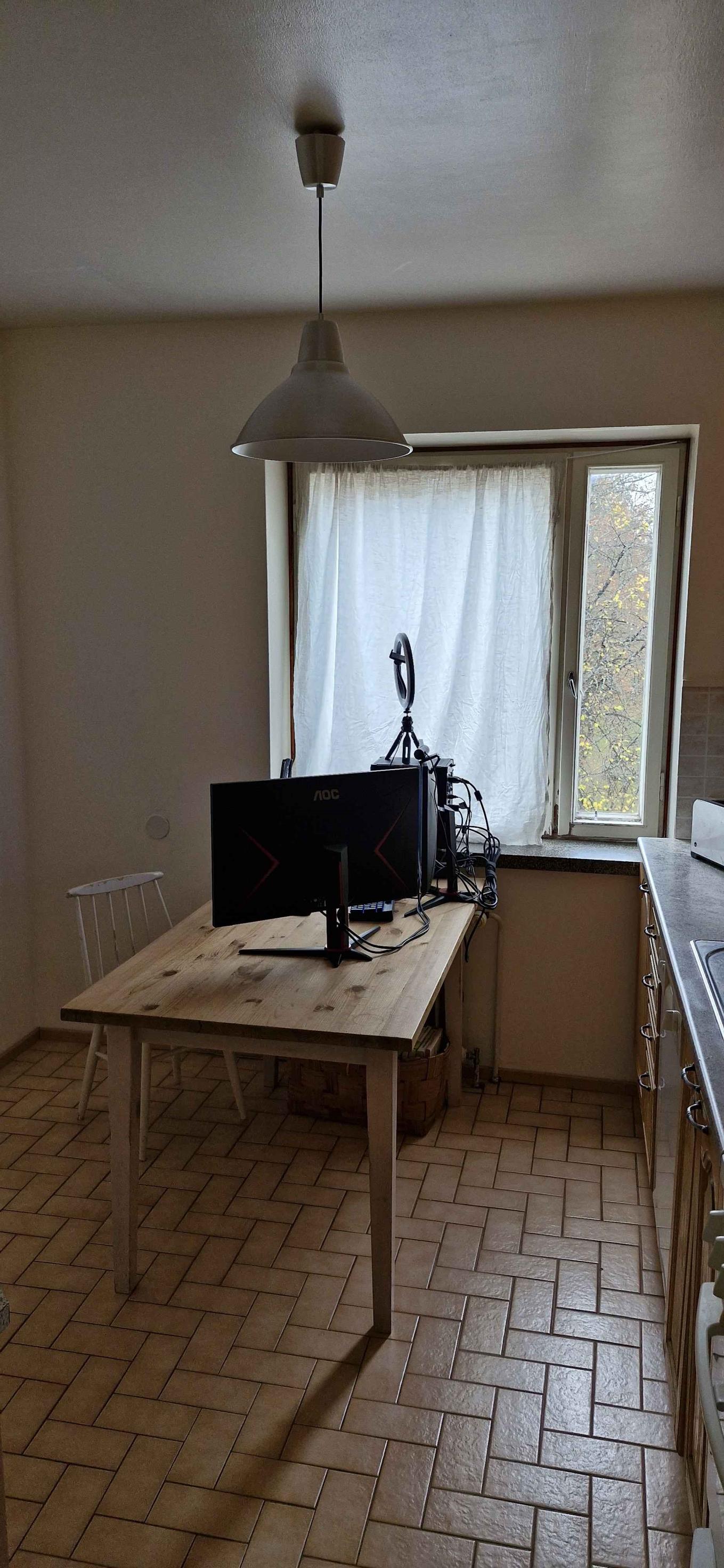
We live in a three-room rental, which many would consider crowded. According to the official definition, living conditions are crowded if there are more people than rooms in the home. The kitchen doesn’t count as a room. Statistics show that crowded living conditions especially affect families with children in bigger cities.
Yet Finns have never lived as spaciously in statistical terms as they do now, says Senior Statistician Mika Ronkainen from Statistics Finland.
He notes that the main reason for increased living space is the popularity of single-person households. Someone living alone has more square meters all to themselves than someone sharing with others.
“We’ve kept the space open by having just a few pieces of furniture. For example, we don’t own a sofa, which would take up a large chunk of the floor area.”
I don’t think our home feels crowded. It’s bright and has an entryway, a kitchen with a door, a living room open to the hallway, and one bedroom shared by our two oldest children.
We use the other bedroom as a home office. My 52-year-old spouse works from home often and needs a quiet space.
The best thing about our home is how well the floor plan works. Three clearly defined rooms are enough for us, and we’ve kept the space open by having just a few pieces of furniture. For example, we don’t own a sofa, which would take up a large chunk of the floor area.
The most important aspects of making a small home work, in my opinion, can be summed up in five points.
First, protect your floor space. In each room, we keep as few items on the floor as possible. In our hallway, instead of a standing coat rack or closet, we hang coats on a rack over the bathroom door. We tried mounting it to the hallway wall, but it wouldn’t stay.
In the hallway, we also have a bench-like shelf with space for shoes underneath, while other shoes go in a closet in the home office. On top of the shelf is a basket for gloves and hats, and another basket on the floor for odds and ends like bike helmets, reflective vests, and the kids’ outdoor pants.

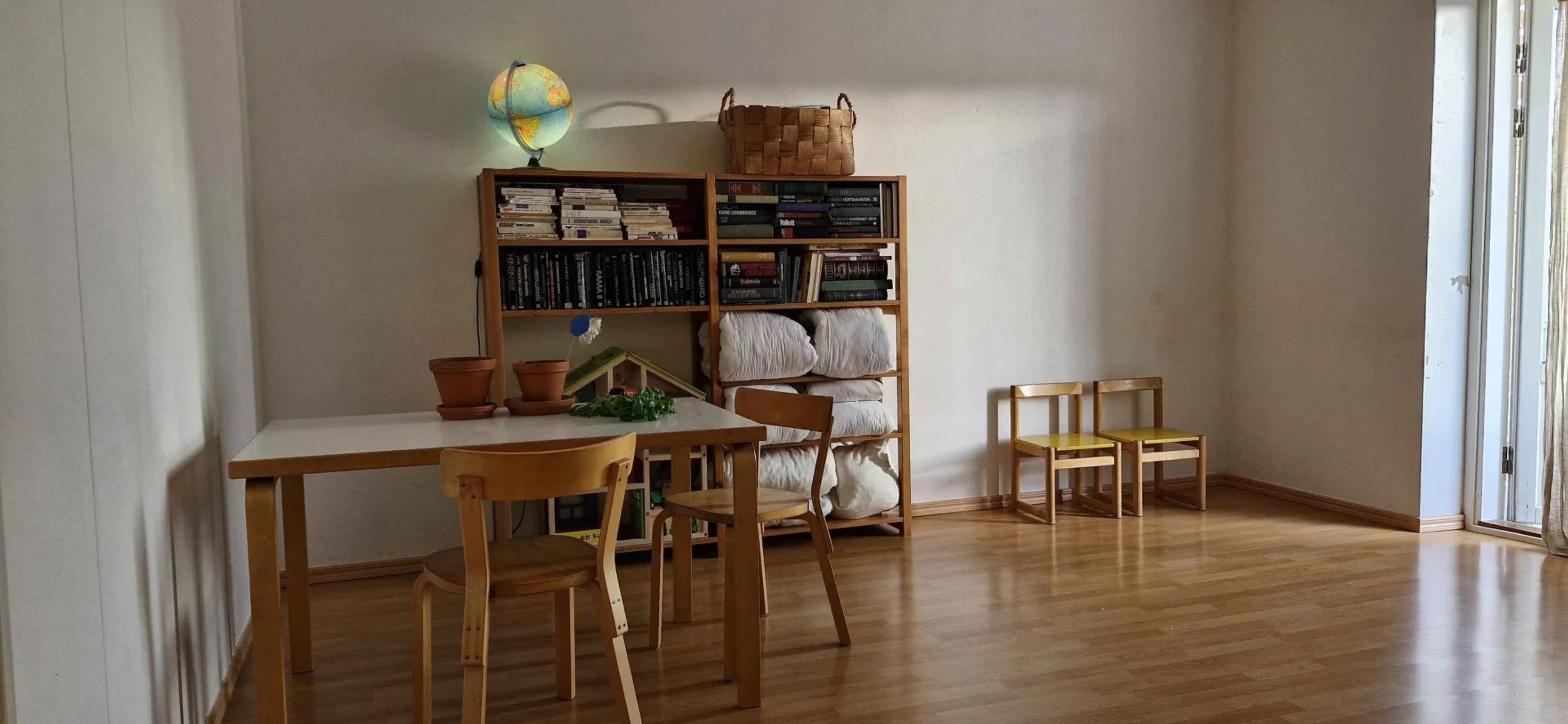
Our living room doesn’t have a sofa or coffee table. I, my spouse, and our two youngest kids sleep there. We had a wide double bed before, but it took up a lot of room and blocked the walkway.
My husband proposed getting rid of the bed, and it turned out to be the best idea ever! We still share a family sleeping arrangement with our youngest, but now we use two futon mattresses. My back pain disappeared soon after we switched to futons.
Every night, we roll out our 90-centimeter futons to sleep, and every morning we put them away. By day, the mattresses stay on the bookcase in the living room, which also holds the kids’ drawing supplies and toys—easy to spread on the floor for play. When we have visitors, we sit on the kitchen chairs or our wooden office chairs.
When almost everything is in plain sight, it’s hard to accumulate too many toys or other items without noticing.
Rooms with doors are crucial. We can shut the kitchen door for peace and quiet. In a large family, everyone needs a way to find privacy when they want it.
Each room in our apartment can serve more than one purpose. That’s why my gaming computer has a permanent spot on the kitchen table.
I’m passionate about game streaming and earn a bit of income from it, as well as from writing my blog. Mostly, though, I’m at home with the kids.
“Since we all wake up at different times, we often eat breakfast in pairs. We have another dining table in the living room.”
There’s room for six chairs around the kitchen table, but since we all wake up at different times, we often eat breakfast in pairs. We have another dining table in the living room.
We don’t have a TV, but everyone has their own computer instead. Gaming is something the whole family enjoys. Our teens’ computers are in the home office, while the younger kids’ computers are on built-in desks in the living room bookcase.
We also enjoy playing board games together, and my spouse loves baking with the kids. Even though there are six of us, we often have a room standing empty.

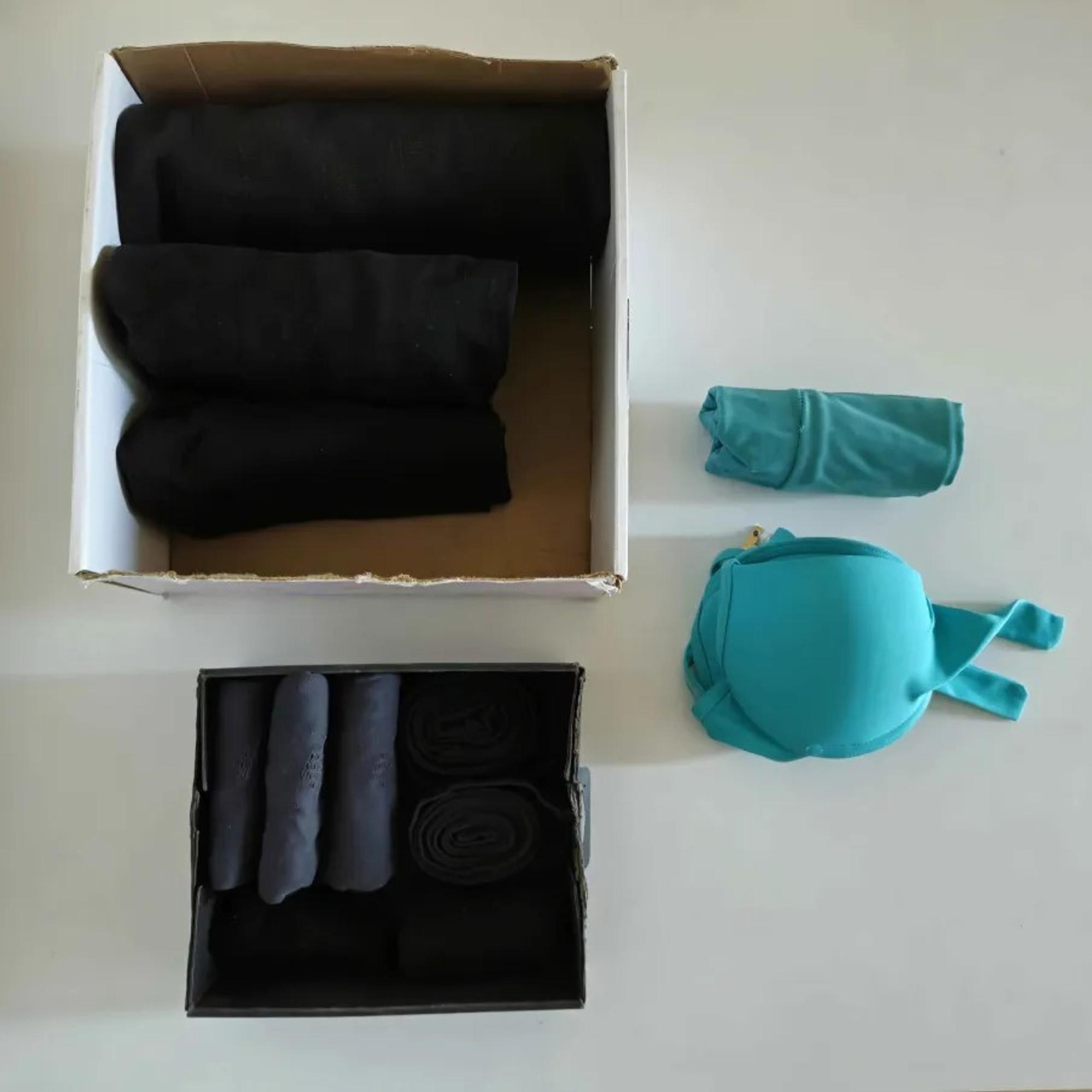

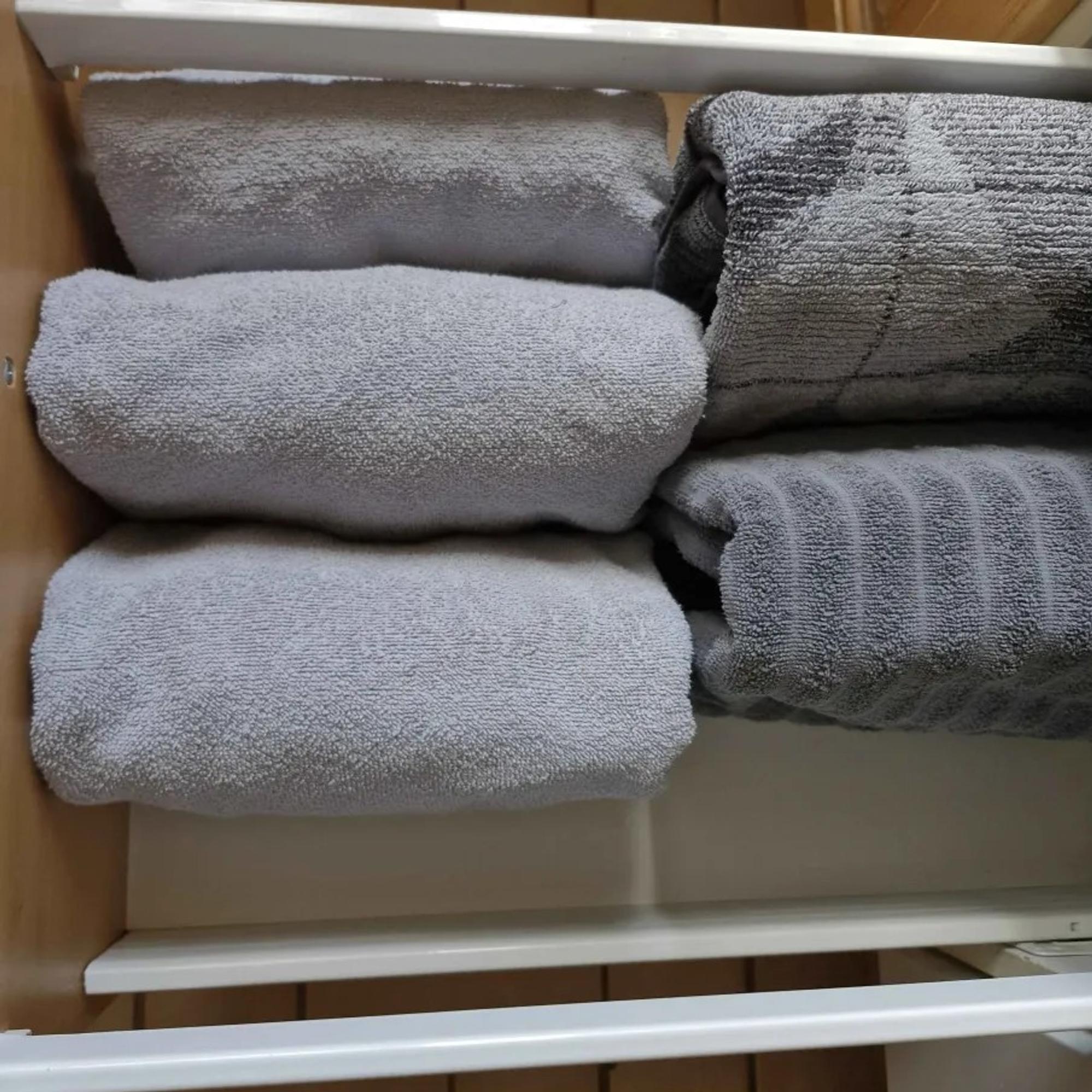
In a small home, it’s important that unwanted items exit promptly—like when the kids outgrow things—or they’ll just crowd our closets.
If I don’t need something, I let it go pretty easily. I think hard about new purchases, because bad buys frustrate me.
We used to have a handy recycling room in our building. Neighbors quickly snatched up items, since so many people live here. Now I take the kids’ outgrown clothes to a recycling center.
“When I change our sheets, I wash them and put the same ones right back on.”
You need quick access to items. We keep mid-season and seasonal clothes—summer pieces in winter and winter pieces in summer—in a closet in the home office. They’re easy to grab, and no one has to dig around in storage.
The home office has six closets. Three hold my spouse’s clothes and tech gear. One holds blankets, pillows, towels, and linens—extras for overnight guests. Another has our mid-season clothes, and the last stores our camping gear and Christmas tree.
We have six towels and four sets of spare sheets. But often, when I change our sheets, I wash them and put the same ones right back on.
At home, we have just enough things that they can be stored in the apartment building’s storage unit. For the same reason, we generally have a good sense of which children's clothes we're lacking.
Our storage unit is around six square meters. It contains my spouse’s belongings, skis, sleds, and a box for keepsakes like the kids’ clay creations and special drawings. Some of the drawings end up on our kitchen door, acting as a rotating art gallery.
The keepsakes we put in storage must all fit into that one box. If it starts filling up, I remove something. It’s not even half full yet.

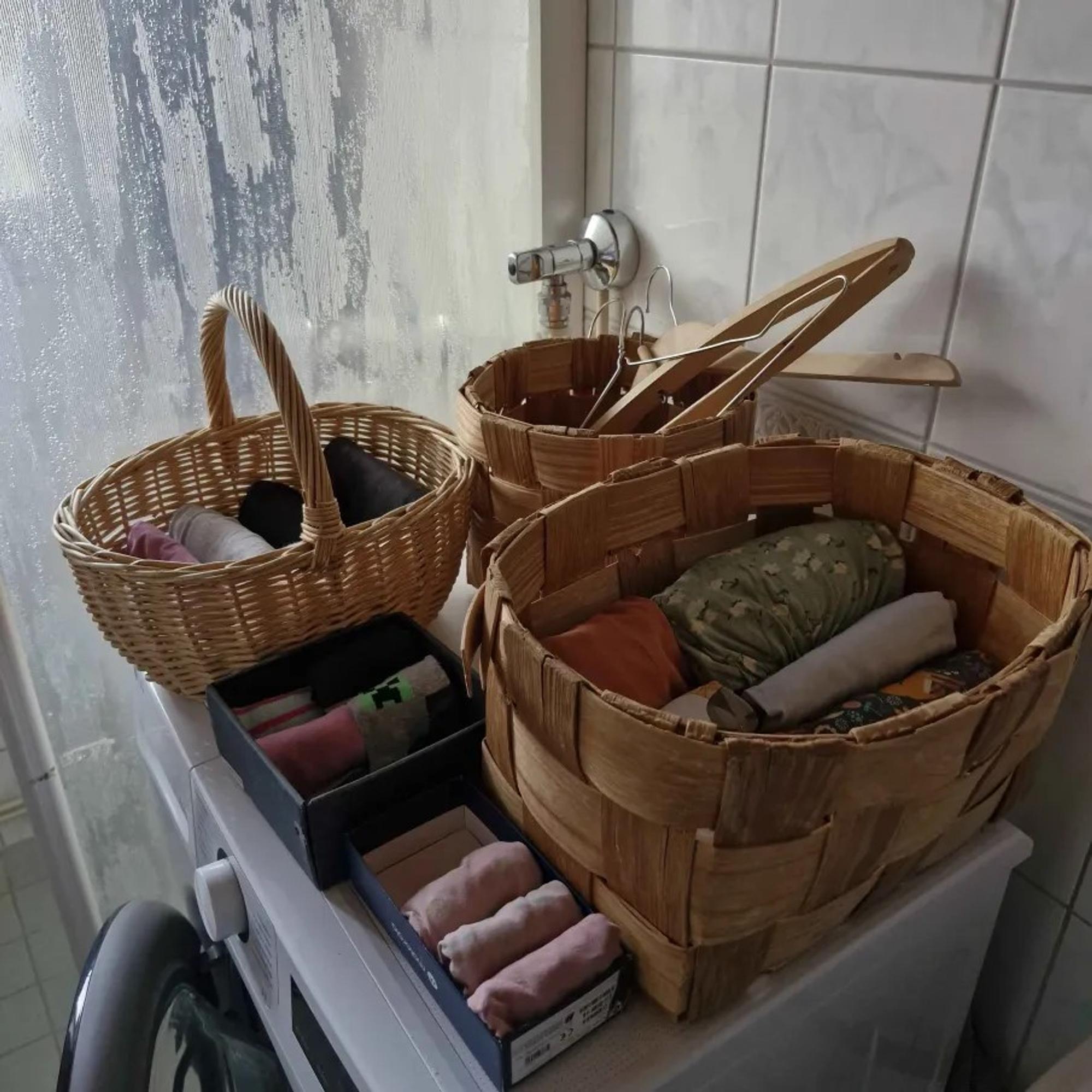
I’m a minimalist; my family members aren’t. Even so, we keep our shared items to a minimum. That way, everyone fits nicely in our cozy home. By cutting down on shared items, we have more space for each person’s own treasures.
For example, we own just enough dishes that we need to wash them after each meal. We have six large plates, one pot, and one frying pan, all of which we wash by hand.
“We own just enough dishes that we need to wash them after each meal. We have six large plates, one pot, and one frying pan, all of which we wash by hand.”
Because our housing costs aren’t sky-high, most of our income doesn’t go to rent. In a small home, even if the washing machine breaks, it won’t throw our finances into crisis. Lower housing costs mean more breathing room in our budget—and in life.
If we moved to a bigger place, we’d either have to go farther away to keep the same rent or pay 400 or 500 euros more a month—quite a blow to our budget.
Our day-to-day life in a small home is easier because of the low costs, but also because cleaning is quick. Doing laundry is fast too, and our closets couldn’t hold giant piles of clothes, sheets, or towels anyway.
We once tried a rule of four bottoms and four tops per person, but we don’t strictly follow that anymore. We still keep a fairly minimal selection of kids’ clothes. A small amount is enough if it dries quickly.
For the children, the main thing is that any clothes we buy match their taste and that they get to choose them themselves.
“Our kids haven’t really complained about not having their own rooms. The idea that we might need more space has come more from us adults.”
Nine square meters per person is significantly less than the Finnish average.
People’s living space has steadily increased, and the average square meters per inhabitant continued to rise also during the pandemic, according to Statistics Finland’s Mika Ronkainen. In 2019, the average Finn had about 41 square meters.
In 2022, Finland’s average living space reached its highest point in recorded history: 41.7 square meters per person, remaining the same in 2023.
Our kids haven’t really complained about not having their own rooms. The idea that we might need more space has come more from us adults. We talk about eventually giving our older ones their own space and the younger kids individual beds. Until then, we’re happy as we are.

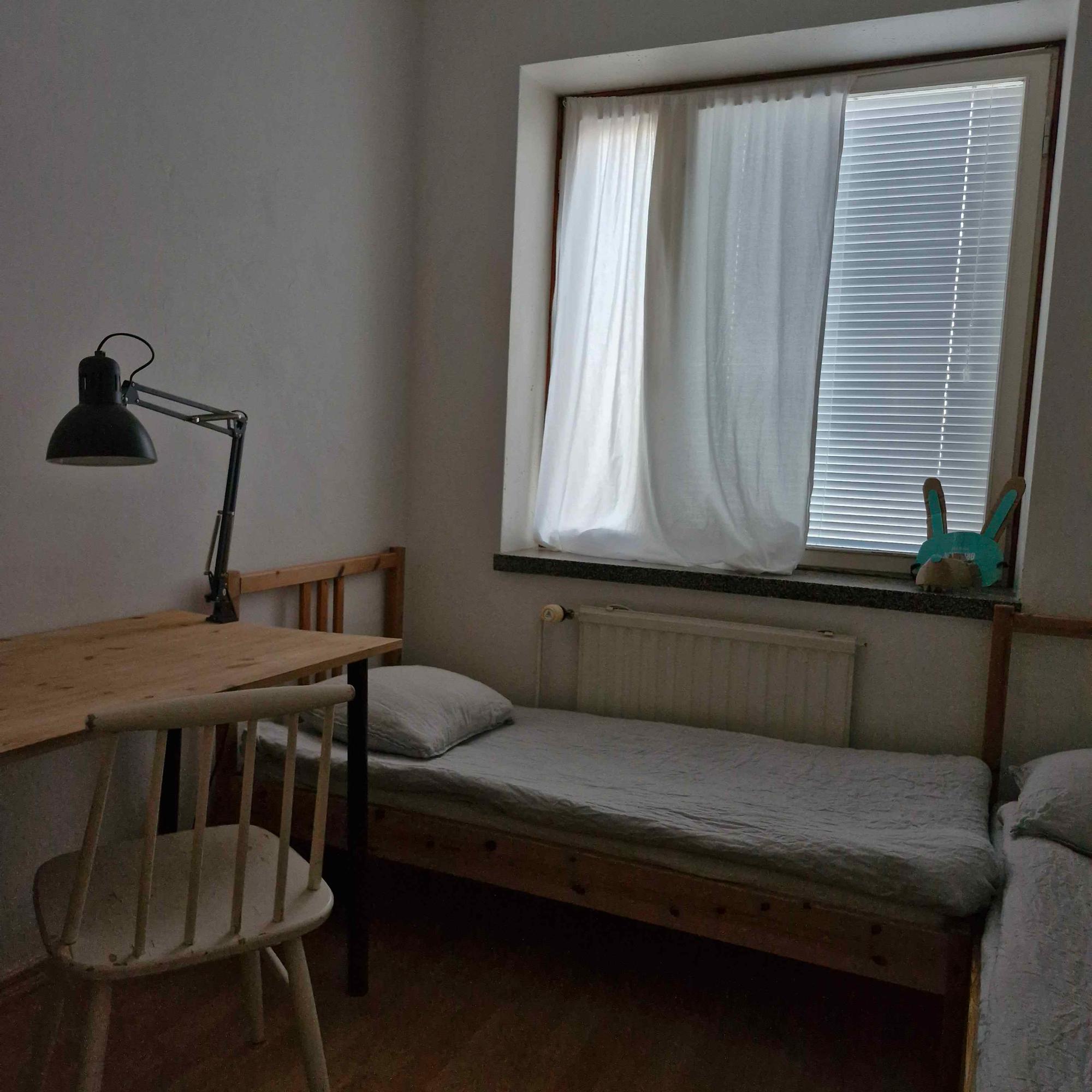
Riina’s tips: how to make a small home work
- Fewer pieces of furniture. Think about which pieces you actually need. We keep as few furnishings as possible in each room. We don’t have a sofa, which would take up a lot of floor space on its own.
- A minimal number of belongings. Having fewer shared items leaves more room for everyone’s personal essentials. For example, we have just enough dishes so they must be washed after each meal.
- Get rid of clutter right away. I keep a paper bag in the kitchen’s pot cabinet, which I call the recycling cabinet, for items we no longer need. It’s easy to take them all at once for recycling.


